
You’ve probably seen the stories and photos circulating about the Death Valley super bloom. We had, too, and thought we shouldn’t let the opportunity pass to see this once-in-a-decade phenomenon. The timing was perfect as we planned to head out to the California desert during the beginning of March and it was primed to be peak viewing of the flowers. Our friends from JenEric Ramblings camped with us to make it even more special.
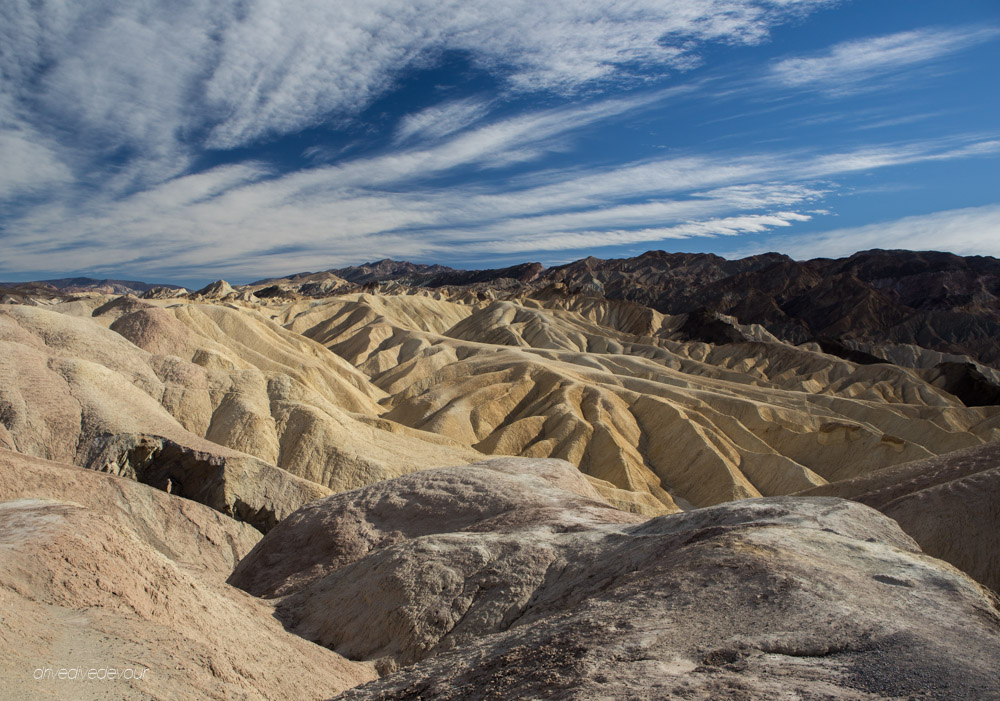
Day 1: Badlands, Salt, and Flowers
Brandon and I went into the park one day to explore on our own and gather some first impressions. We both wanted to see the park and, admittedly, I was a little anxious to see the flowers. First, I must say that Death Valley is a huge park. We were there for hours and just scratched the surface. We came in on 190 and made our first stop at Zabriskie Point where you overlook some of the badlands in the park. Badlands are always interesting and being able to look down upon them is a nice point of view. After making a quick stop at the visitor center, we headed down Badwater Road on the search for wildflowers and to the see the lowest point in North America. Desert Gold flowers carpeted the edges of the roadways giving the land a yellow appearance.

We made a stop at the Devil’s Golf Course, an area of rock salt that has eroded into sharp spires so that “only the devil could play on such rough links.” The salt gives a false appearance as though it might crumble upon your touch, but trust me, those things are very hard and very sharp. There are even signs warning that a fall could cause serious injury. Next we made it to Badwater Basin, the lowest elevation in North America at 282 feet below sea level. The deepest dive Brandon has done is 130 feet in Lake Jocassee and this was a whopping 150 feet deeper without needing any scuba tanks or decompression! Badwater Basin is a vast salt flat and one of the busiest places in the park until night when everybody disappears. We went back out with Jeanette and Eric later in the week to the basin at night and found it quiet, relaxing, and desolate.
Day 2: Canyon Roads and more Flowers
We came back into the park a couple days later with Eric and Jeanette on the search for flowers and fun. We decided to run up some of the canyon roads that looked promising for more flowers and fewer people. Thankfully, they delivered on both accounts. The washes were filled with evening primrose, gravel ghost, notch-leaf phacelia, and many others. I know Jeanette and I probably drove the guys nuts with all the stopping to shoot flowers and just take in the color. We also made a quick run of the Twenty Mule Team Canyon Drive which is named for the famous symbol of borax soap mined here. They may have had 20 mules, but I still think we ran it faster.
Day 3: Super bloom, 4-wheeling, and Moving Rocks
Our final day in the park was an all-day adventure consisting of more bloom watching, 4-wheel drive canyon roads, and a trip to the playa to see moving rocks. We consulted the National Park website for the flower update before heading out. It promised Mud Canyon Road was becoming so thick with flowers that there was nowhere to pull off. We pointed our cars that direction and headed off. Indeed, the edges of the road were overgrown with flowers and we saw lots of variety. You really have to start looking to see everything. At first, you may see all gold or yellow, but as you look closer you start to see whites and purples mixed in. Then you start to notice the tiny flowers that are closer to the ground. It really is amazing what can grow in this land given the right conditions.
We made our loop of Mud Canyon and Beatty Cut-Off Road and headed back to the small town of Beatty, NV just outside the park to top off our gas. It was going to be a long day and we didn’t want to chance running out of gas on a back road with no cell service. On our way out, we spotted wild burros grazing just off the road. We had seen signs for wild horses earlier, but hey, I’ll still take a wild burro sighting! We decided to make a quick stop in the ghost town of Rhyolite and were surprised to stumble upon the Goldwell Open Air Art Museum. We wandered the grounds for a bit before heading into town. After filling up, we headed back on Titus Canyon Road which turned out to be a great drive with desert washes leading to rocky hills, an abandoned mine town, narrow canyon twists, and, of course, flowers.
After all the super bloom sightings, we were on our way to a notably non-flower area, the dry lakebed or playa where rocks race each other leaving trails in their wake. The 27-mile road to get there was a rough washboard and we saw a couple of abandoned vehicles on the trail one of which had a broken drivetrain. The best thing along the drive was all the Joshua trees lining both sides of the road and topping the crests of the hills. After suffering through all the bumps, we made it to Racetrack playa. The first stop is the grandstand which is a large outcropping of quartz and monzonite, but we skipped this in the dying light to make it to the moving rocks. No one has actually seen the rocks move, but the trails they leave are evidence of their meandering ways. The theory is the right conditions of rain (about 1/2 inch) and strong winds (50 mph) allow the rocks to slide across the firm surface. It’s amusing to look at all of the tracks and imagine the rocks in some kind of race.
Our time in Death Valley was well-spent and I’m glad we were able to see this rare super bloom. But even if you miss it, I would recommend making a visit to Death Valley as it has a lot to offer. We’ll have to go back as there is still much we didn’t see. I just don’t plan to visit in July, how about you?
You should know:
- Winter and spring are the best times of year to visit all areas of the park. Summer can get deathly hot (heh heh).
- There is no cell service in the park except at Furnace Creek.
- There is a gas station in Furnace Creek and Panamint Springs, but they are expensive. We filled up outside the park.
- You can check the NPS website for flower updates and road conditions.





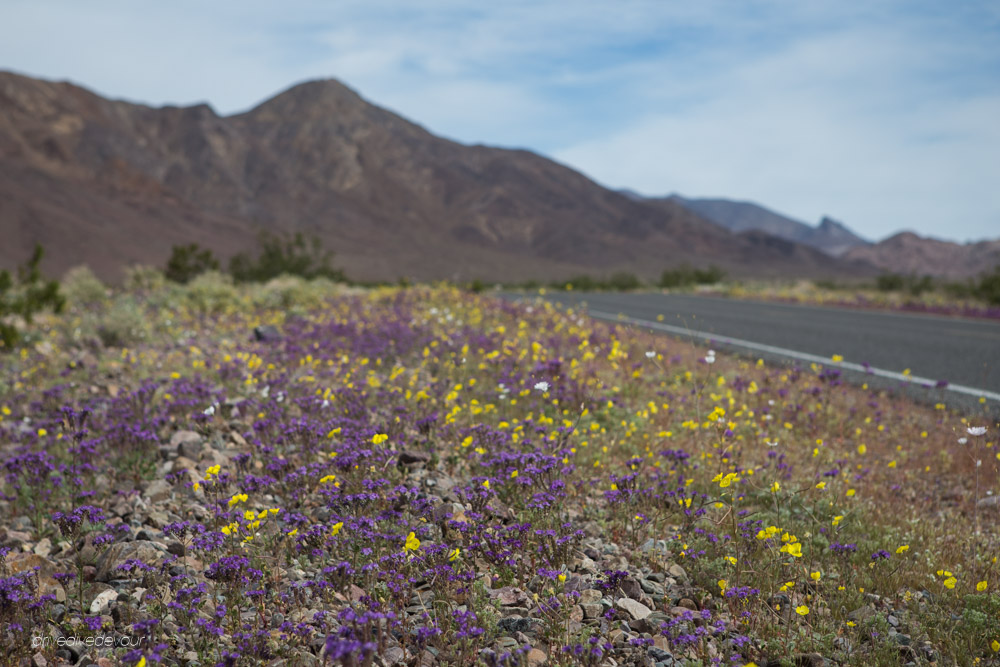

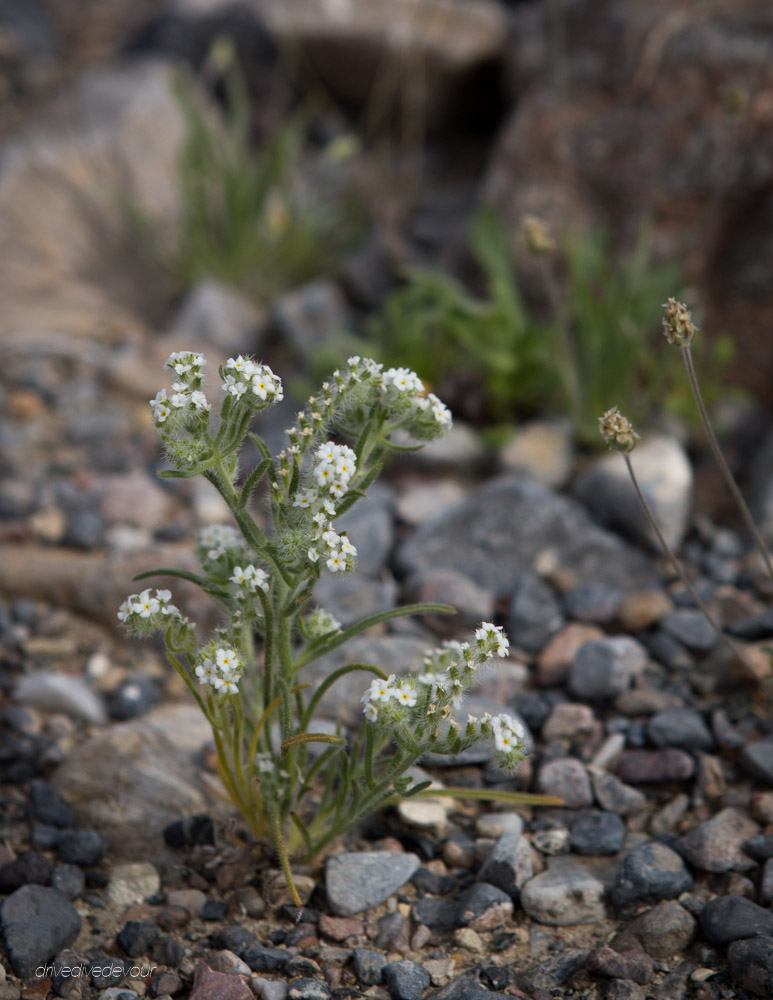


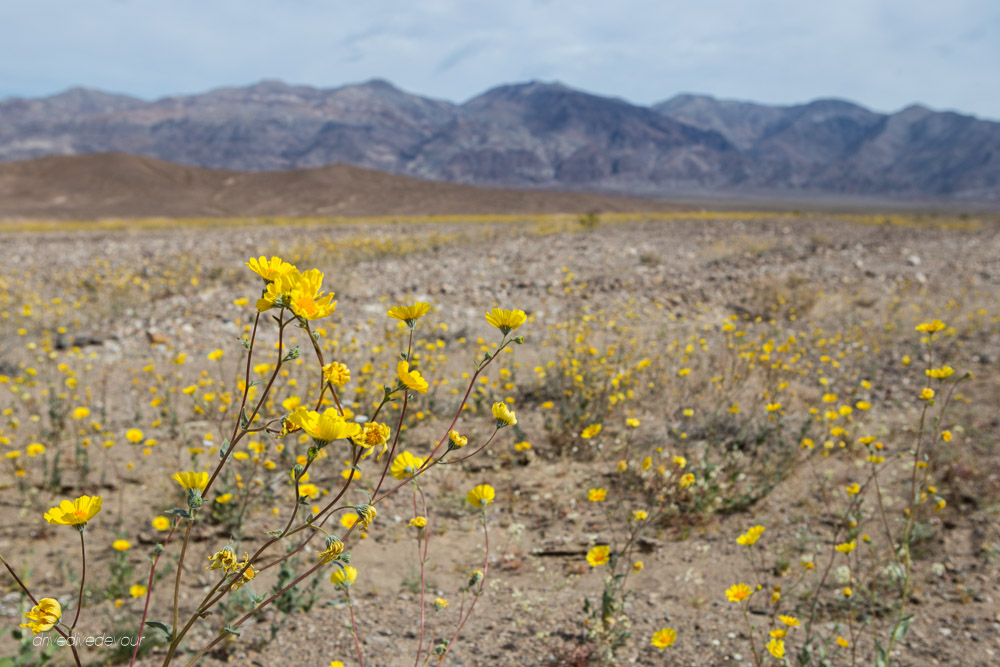





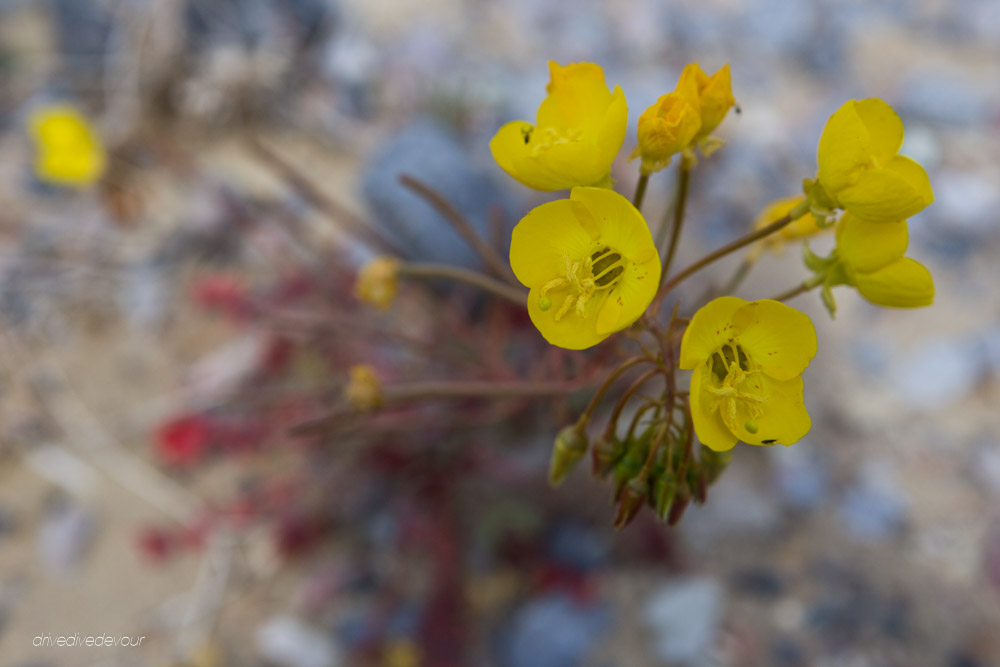

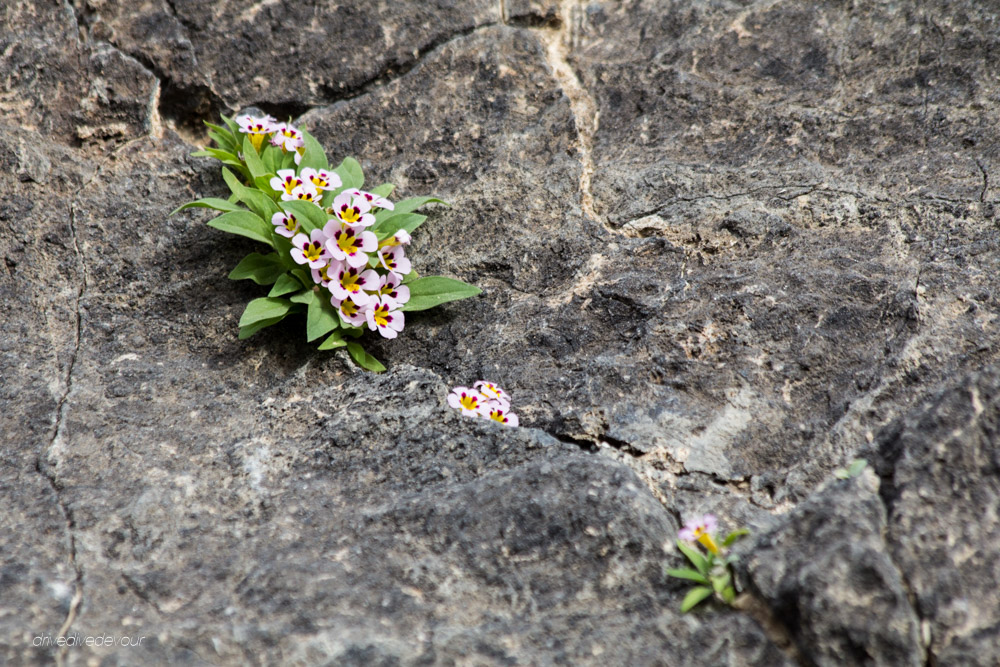




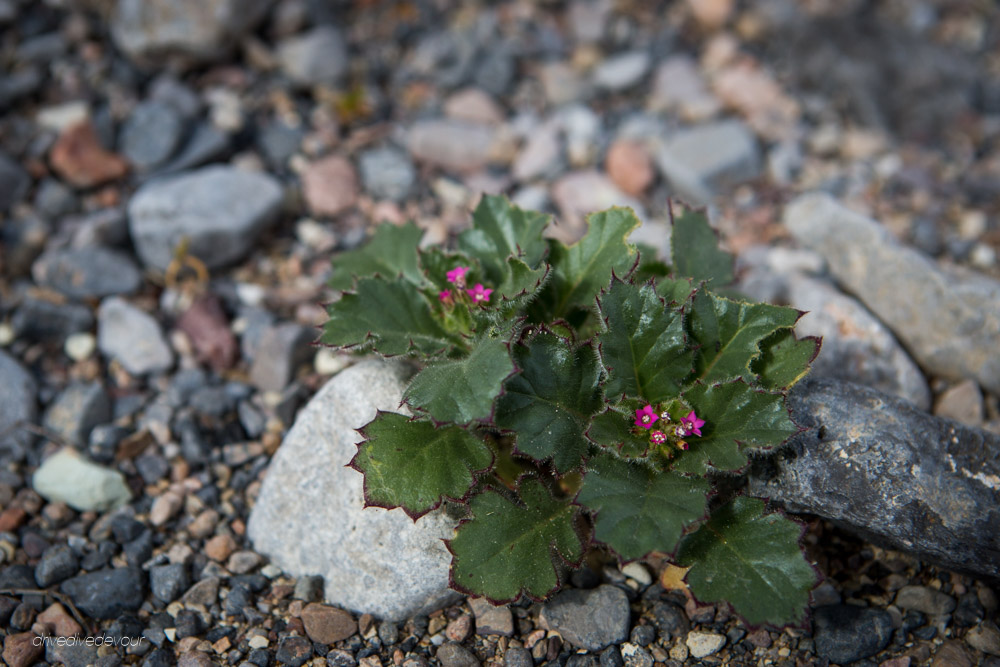



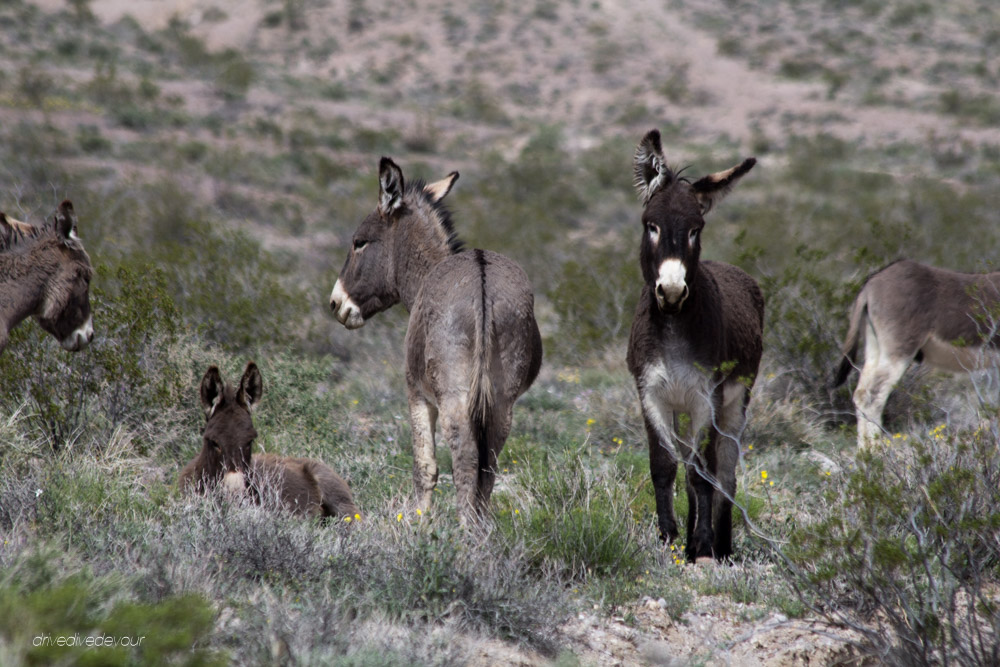
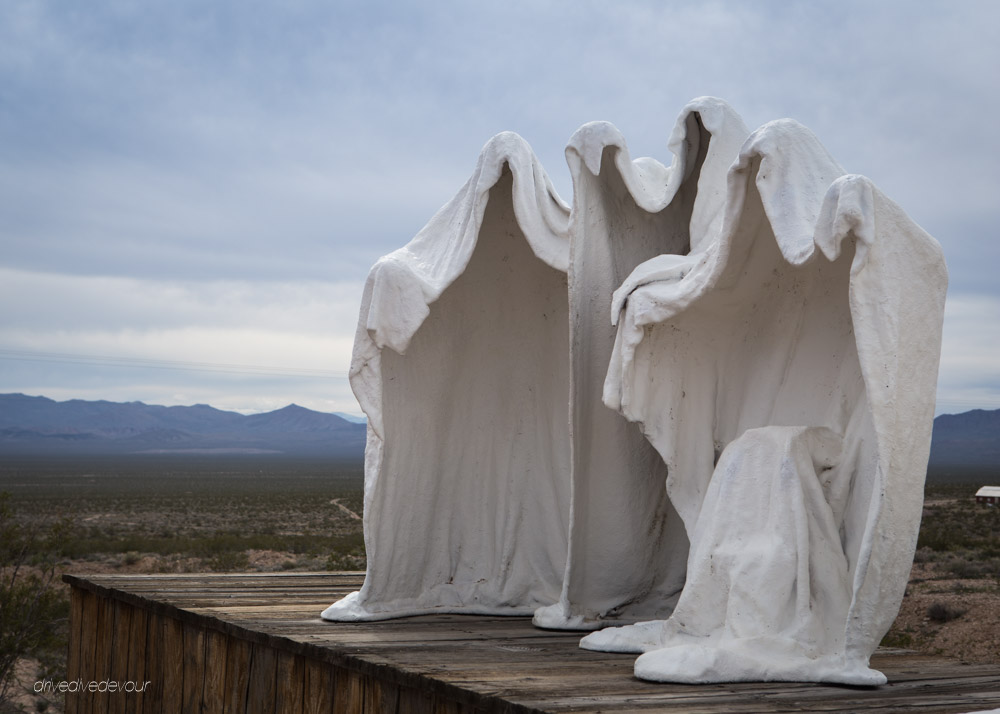


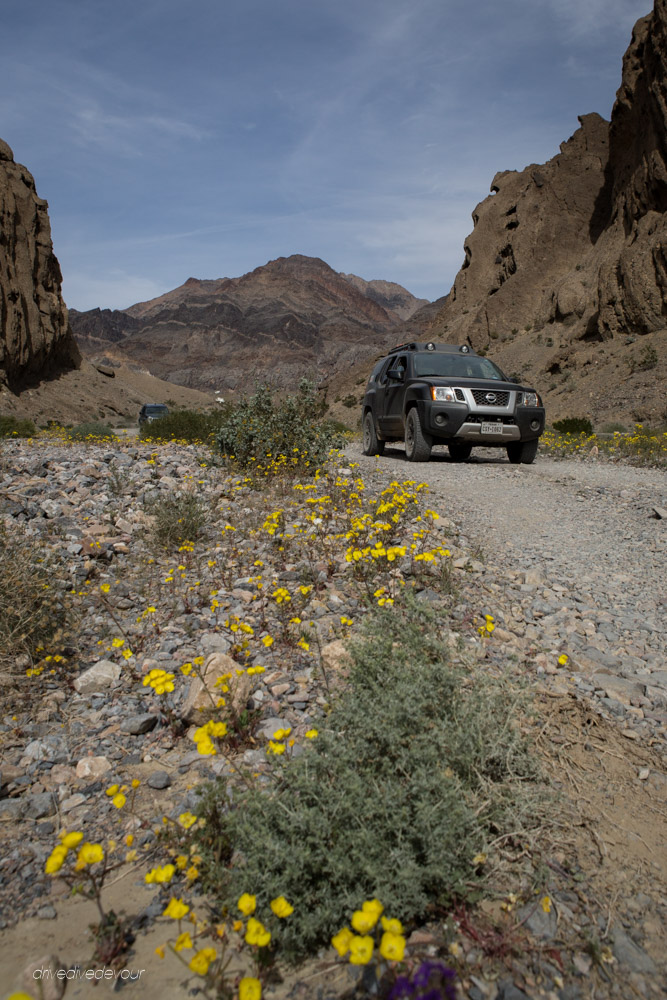


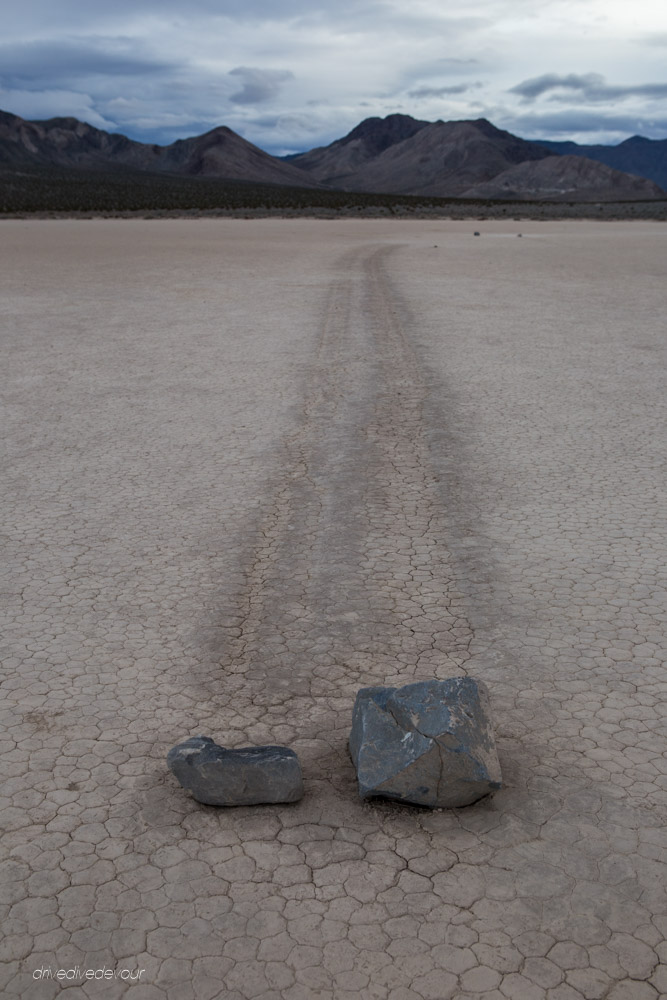


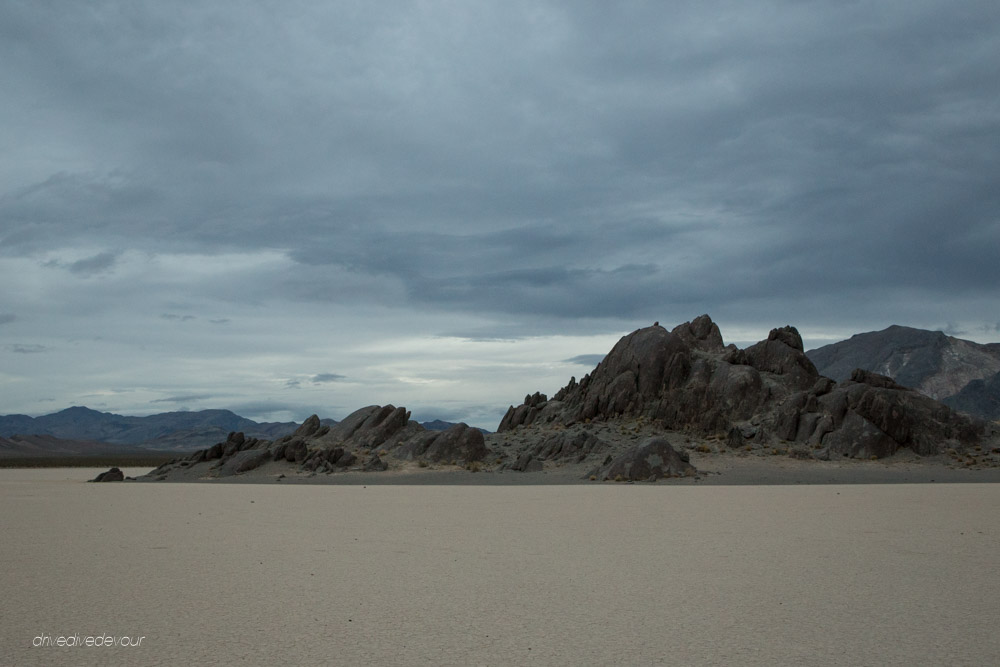
What beautiful photos you have taken! This looks like a very nice trip.
Thanks! We had a really good time.
Death Valley remains our favorite National Park…even after 3+ years of fulltime travel and many, many National Parks visits. I’m so glad you took advantage and made the trip for the super bloom. It’s definitely worth revisiting whenever you have a chance to take some time off and spend days or weeks in the park. Panamint Springs in our favorite camp ground (they have a bar!!) and there are so many wonderful hiking areas and slots to explore.
amazing
Great presentation in your blog. The photos capture the feel of the park and the exceptional wildflowers of this year. Thanks for sharing
Great shots! I wanted to go but it was pretty far, so I caved. I saw it through you now.
Thanks!
Glad we could help out!
Fantastic photos! We witnessed the beginning of the superbloom at the end of January. You could spend years exploring Death Valley and not see everything. It’s my favorite!
The moving rocks on Racetrack Playa were explained in 2014. Scientists who’d placed GPS trackers and cameras on the playa caught the rocks moving! It’s due to ice sheets breaking up and being blown by the wind, carrying the rocks with them. So cool! And so recent, the park system hasn’t updated the signage yet. (Or maybe they are going to leave it a mystery to draw more people.)
http://www.nature.com/news/wandering-stones-of-death-valley-explained-1.15773
Very cool. We knew it had something to do with water moving the rocks, but hadn’t heard about the ice sheets.
Awesome shots! Thanks for sharing!